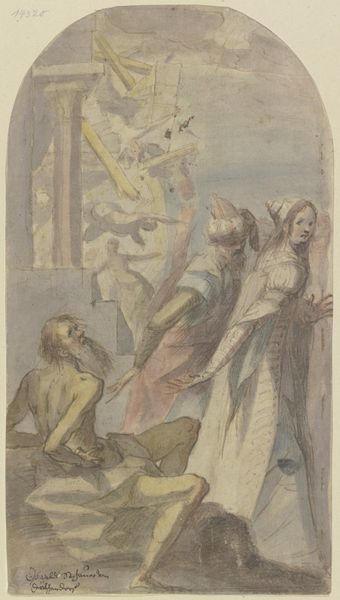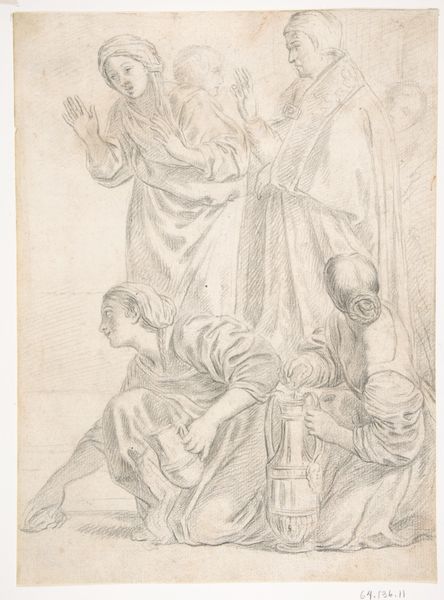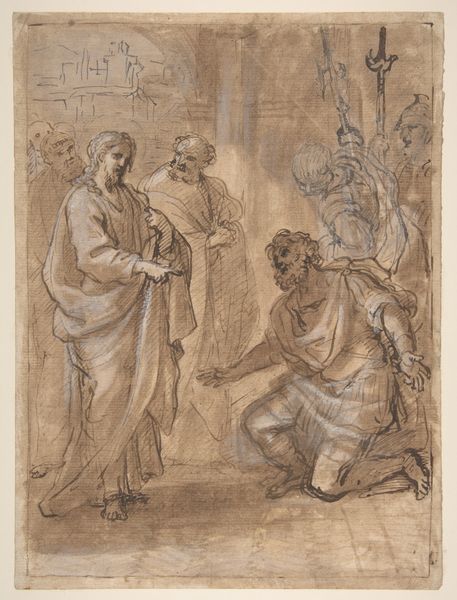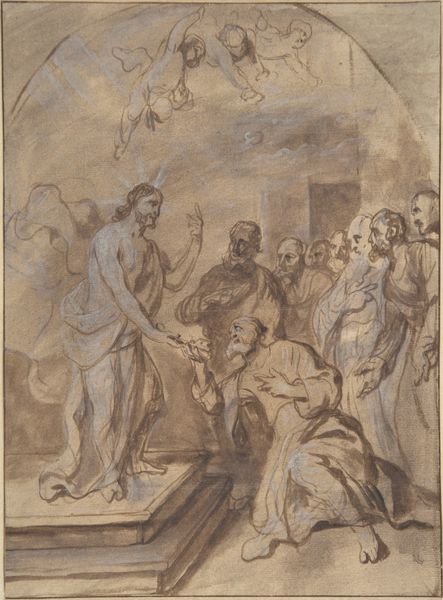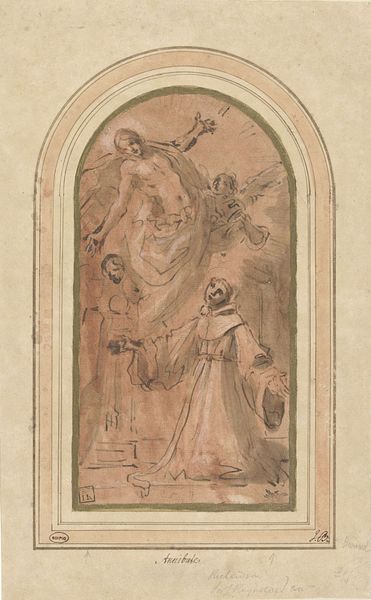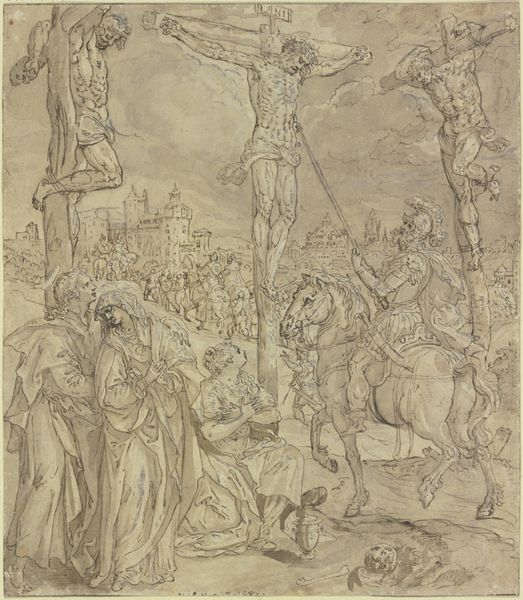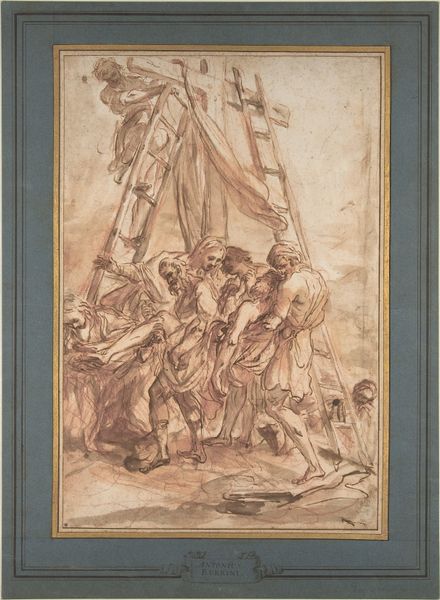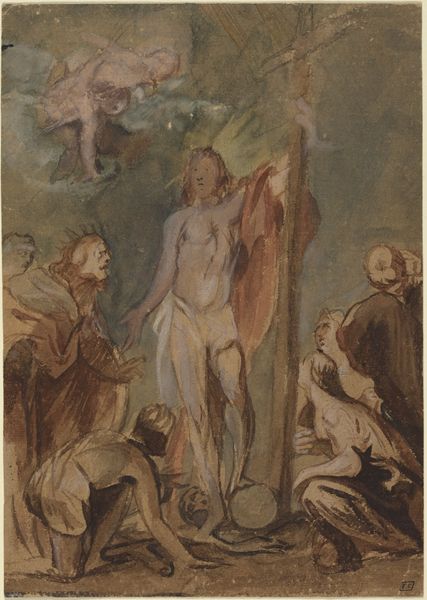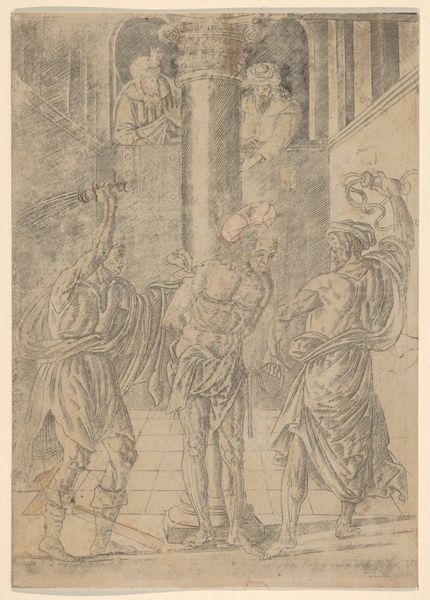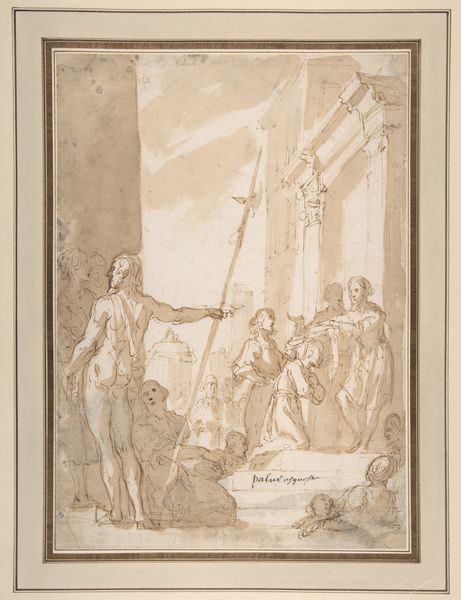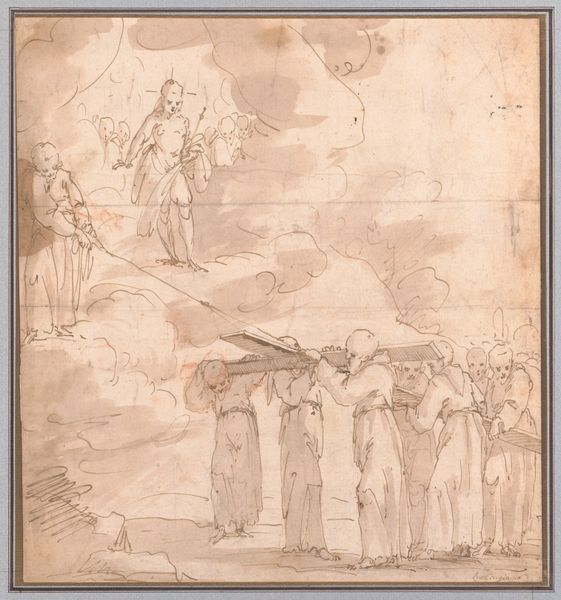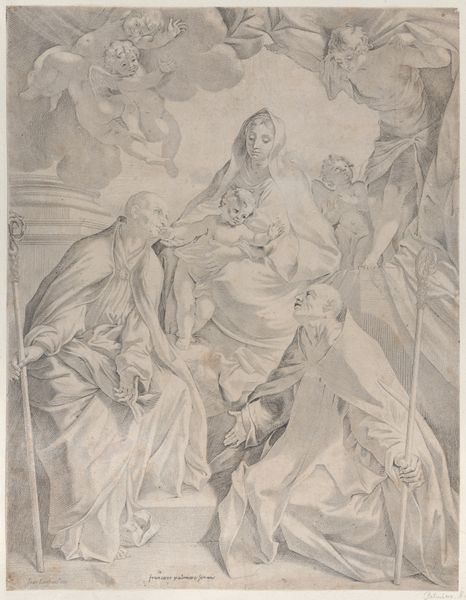
drawing, print
#
drawing
#
toned paper
#
water colours
# print
#
human-figures
#
possibly oil pastel
#
handmade artwork painting
#
oil painting
#
coffee painting
#
underpainting
#
human
#
watercolour bleed
#
watercolour illustration
#
watercolor
Dimensions: 6-3/4 x 5-1/4 in. (17.1 x 13.3 cm)
Copyright: Public Domain
Editor: Here we have “An Execution,” an anonymous artwork created sometime between 1700 and 1800, residing at The Met. The faded watercolors and sketchy lines give it such an eerie, almost dreamlike quality despite the disturbing scene. What feelings or stories rise to the surface for you when you look at it? Curator: Oh, my, yes! That watercolor bleed creates such an unsettling mood – perfect for the subject, right? But look closer, beyond the gruesome spectacle. Notice the odd angles and the almost floaty quality of the figures. The artist's anonymity is a kind of freedom, a detachment, perhaps a protective barrier from the horrors they are portraying, wouldn't you say? Editor: That's interesting. It's like they're observers themselves, not really involved in the horror, right? Almost clinical. I was too distracted by the central figures! Curator: Precisely. And what’s striking for me, really, is the restraint, that it is an understated horror if such a thing exists. This restraint is almost... tender. A delicate depiction of violence is quite poetic, no? Editor: Now that you mention it, I can see how the artist balanced the drama with gentler hues and ethereal lines. What does that contrast tell us about society's view on violence, back then? Curator: Perhaps violence, even public executions, were more commonplace. There's a casual quality to some of the observers that suggests an acceptance – or perhaps resignation? Then again, this artist clearly felt a need to chronicle it, to capture it... to maybe suggest a disquiet? Editor: Food for thought! I came expecting stark horror, but you’ve guided me toward such unexpected empathy, such sensitivity. Curator: Art has a funny way of doing that, doesn't it? Even when looking at the darkest aspects of humanity. And, let’s be real: empathy always wins in my book!
Comments
No comments
Be the first to comment and join the conversation on the ultimate creative platform.
